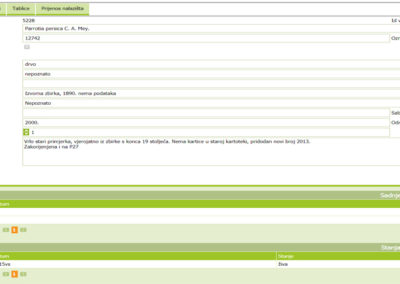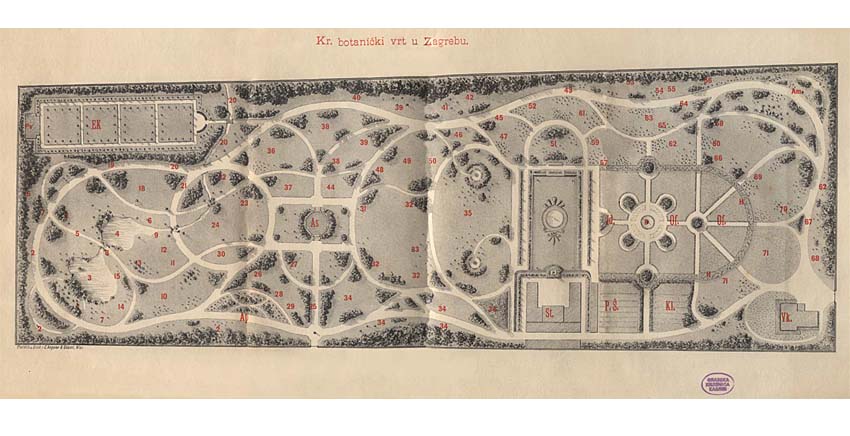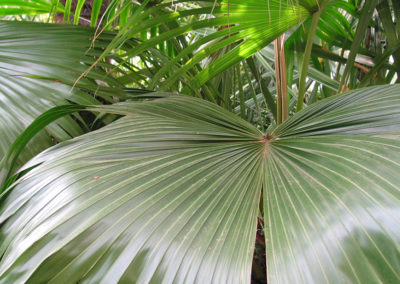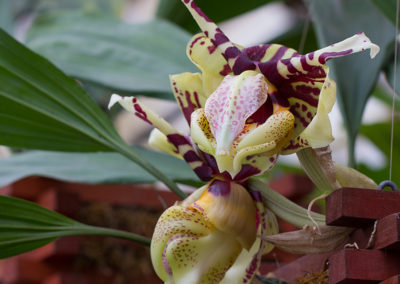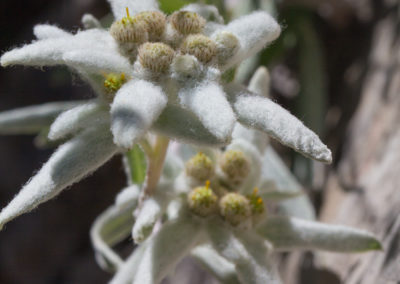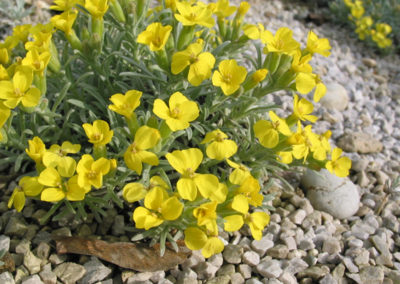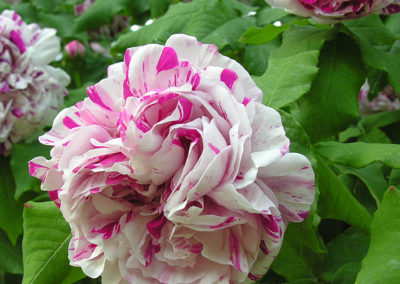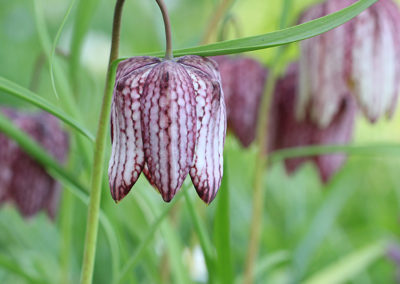Collections
- Home
- Collections
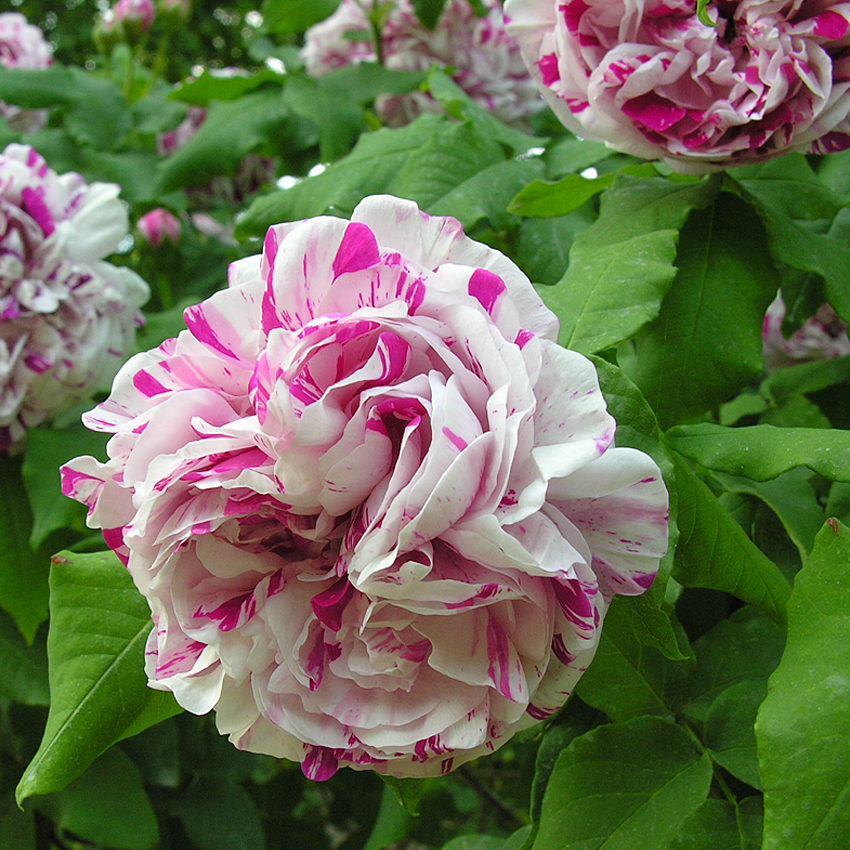
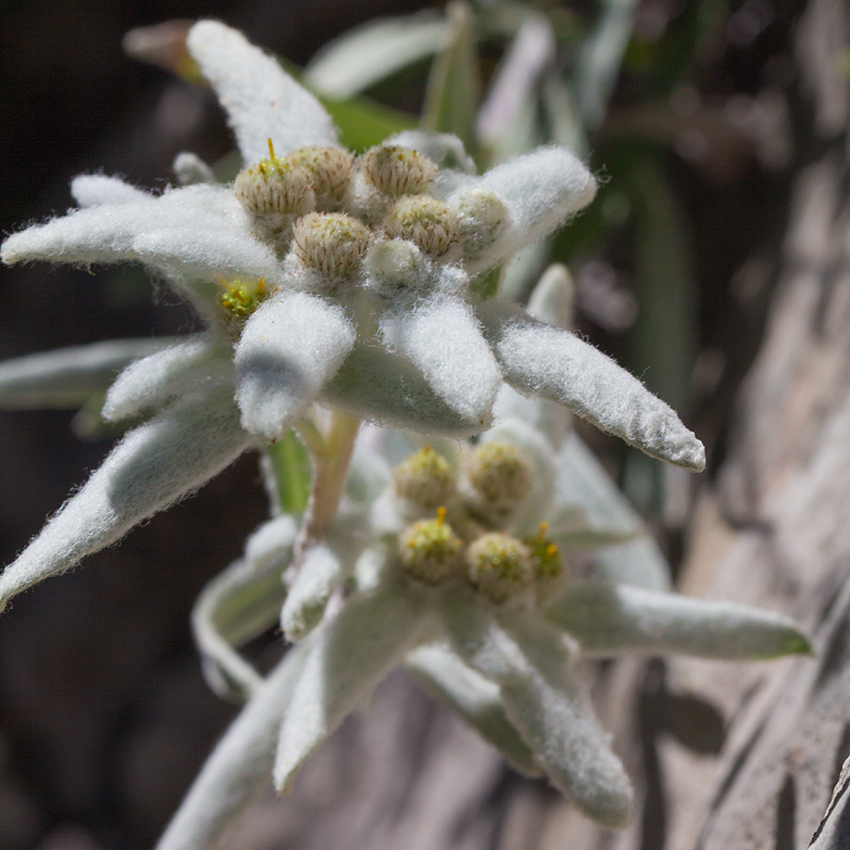
About our collections
Like museums or galleries, botanic gardens also keep ‘exhibits’ – in this case living plants (sometimes also non-living plant material like pressed plants in herbariums, as well as seeds and fruits). Smaller collections of special groups of plants make the Gardens entire Collection. The Collection is subject to changes in time; different annuals may change every year while other plants like trees may live more than a century.
We group plants in smaller collections usually by their life-form (i.e. annuals, perennials, shrubs and trees, vines etc.) or ecologically (e.g. succulents) and further in special collections, like carnivorous plants, Croatian flora, marsh plants etc. Collections are supervised by botanists – curators, and maintained by gardeners and undergardeners.
First description of the Garden’s collections are published by forestry expert Josip Ettinger in 1892 issue of Forestry society journal. Three years after the Garden was founded it already had a collection of more than 1200 shrubs and trees! (pdf: http://www.sumari.hr/sumlist/189209.pdf#page=35)!
Detailed descriptions of the Garden are written by the founder, prof. Antun Heinz, in his work “The Royal Botanical garden in Zagreb” , published in the Herald of Croatian nature history society in 1896. Principles by which the plants were arranged clearly outline the Engler system – one of the prime systems of plant taxonomy by use of phylogenetic principles, devised by German botanist Adolf Engler in 1890s. This original layout, very progressive and modern in the end of 19th century, is still chiefly preserved in our botanical garden. We can not compete in size, number of plants or finances with most European botanic gardens, rather – we belong to a rare group of smaller historic university-type botanic gardens with well preserved original planting layout.
Prof. Heinz intended to have in his collection members of most families described at that time, which resulted in overcrowding the small exhibition greenhouse by 1900s. With the exception of a few hand-written booklets with nursery lists, original inventories were lost during the World wars. Therefore we can not identify oldest plants from the original collection, except for a dozen of large trees, which are seen in old photographs taken at the end of 19th and the beginning of 20th century, e.g. swamp cypresses by the ponds, tulip trees near the main entrance and old oak by the systematic field. Small number of greenhouse plants survived World Wat II, but most of our collection dates to the great restoration after 1946, when a large number of trees and shrubs was planted in the arboretum, exotic plants were cultivated in the greenhouses and regular collecting trips were made all across the country to populate the newly constructed rockeries. According to the card-file database started in 1948 by the 1960s the entire collection (including herbarium and seed collections) numbered up to 10.000 different taxa. We still use the old cardfile, but all the plant data is also stored in a modern electronic database.
Today our planting is rather limited due to lack of space, but we still enthusiastically find a way to acquire valuable specimens and start new collections – for instance tropical ferns which are cultivated for the restored exhibition greenhouse and a moss collection to be displayed in small ‘bryarium’ (moss garden).
Our recent collection numbers nearly 5000 different taxa – natural ranks like species, subspecies and forms, plus cultivars. Plants are labelled with plastic or metal labels, that contain scientific (Latin) name, common (Croatian) name, distribution in nature and database number.
Example of modern plant label
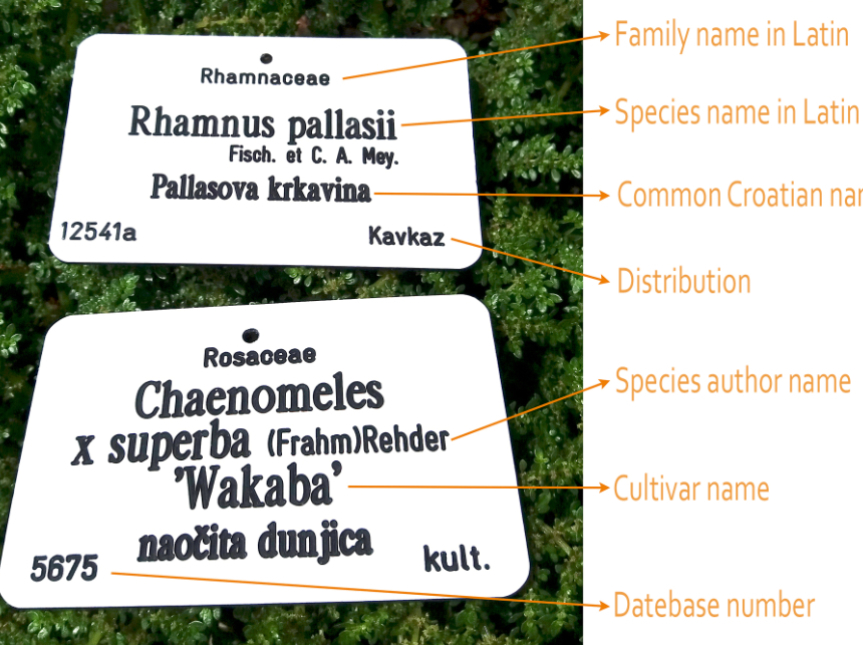
Most of the Garden’s 4,7 hectares area is occupied by the arboretum in the landscape (‘English’) style, 53 plots planted with 200 genera and 800 taxa of different trees and shrubs. In the spring the arboretum ground is covered in different spring flowers.
Floral parterre with roses and perennials, in the western part of the Garden, is built in the formal and symmetrical (‘French’) style. Annuals and perennials also grow in the Alpinum (old rockery near the main entrance), near the ponds and in the flower spectrum in the southeast pat of the Garden, with the adjacent peony garden.
Systematic field in front of the exhibition pavilion accommodates different families and genera of perennials grouped into monocotyledons and dicotyledons, aromatic and medicinal plants and marsh plants. Ferns mostly grow in the fern garden in the field no. 32 (P32).
Wild (Croatian) species are cultivated in the karstic, eumediterranean and submediterranean phytogeographic groups (rockeries) and in systematic field, while lower alpine plants grow in the alpine rockery and several plants from Atlantic coast of Spain and France in the western-European small rock garden.
Greenhouses host different palms, subtropical plants, carnivorous species, succulents and Mediterranean climate woody plants. Most of these are taken out from the greenhouses every spring and placed in different spots in the arboretum so they can be viewed. So far the only small greenhouse open to public is a little dome greenhouse, the ‘Victoria house’ near the fountain in the western part of the Garden, with giant water lily species being the main attraction during the summer.



